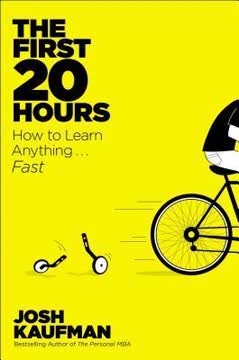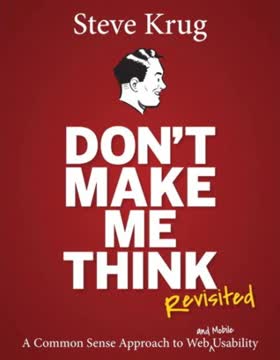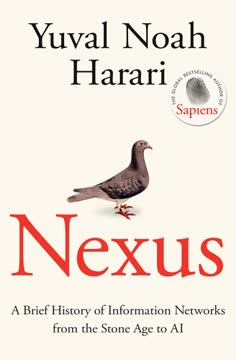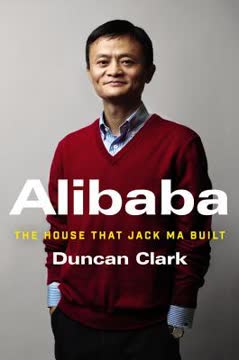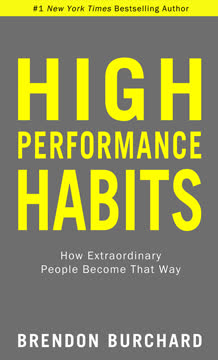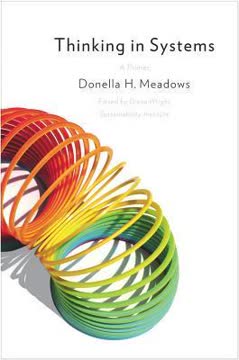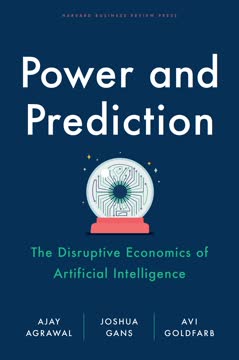重点摘要
1. 利用潜意识影响消费者行为
根据哈佛大学营销教授兼作家Gerald Zaltman的研究,95%的思想、情感和学习是在我们无意识的情况下发生的。
潜意识影响。 大多数消费者决策是由无意识过程驱动的。营销人员必须专注于吸引情感和无意识需求,而不仅仅依赖理性论据。这涉及使用微妙的提示、启动技术和感官刺激来在无意识中影响行为。
神经影像学见解。 像fMRI这样的脑扫描技术揭示了大脑对营销刺激的反应。例如,强势品牌激活与积极情感和奖励相关的区域,而弱势品牌则触发负面情感反应。理解这些神经模式可以帮助营销人员创建更有效的活动,在更深层次上与消费者产生共鸣。
- 关键目标领域:
- 情感关联
- 感官体验
- 无意识偏见
- 本能反应
2. 通过多感官吸引增强品牌影响力
吸引多种感官的品牌将比仅专注于一两种感官的品牌更成功。
多感官营销。 吸引多种感官创造了更具沉浸感和记忆性的品牌体验。这种方法利用大脑在多种感官同时受到刺激时形成更强神经连接的能力。像新加坡航空这样的成功品牌通过在所有接触点上创造一致的感官体验来掌握这一点。
感官品牌元素。 营销人员应考虑如何通过视觉、听觉、嗅觉、味觉和触觉来表达他们的品牌。这可能包括开发标志性气味、定制音乐、独特纹理或独特视觉元素。目标是创建一个统一的感官身份,以强化品牌的个性和价值观。
- 感官品牌检查清单:
- 视觉:标志、颜色、字体
- 听觉:音乐、声音、音效
- 嗅觉:产品气味、环境香氛
- 味觉:产品口味、品牌食品/饮料
- 触觉:产品纹理、包装材料
3. 通过一致性和情感创造强大的品牌联想
一起触发的神经元会连接在一起。
神经连接。 一致的品牌体验在消费者大脑中创造了强大的神经通路。随着时间的推移,这些连接变得自动化,导致对品牌的本能积极联想。这种神经可塑性解释了长期一致的品牌推广为何在建立品牌忠诚度和认知度方面如此有效。
情感参与。 激发强烈情感的品牌会留下更持久的印象。这是因为情感体验在大脑中与纯理性信息的处理和存储方式不同。营销人员应努力通过故事讲述、图像和与目标受众的价值观和愿望产生共鸣的体验来创造情感联系。
- 情感品牌策略:
- 确定核心品牌价值和情感
- 开发引人入胜的品牌叙事
- 使用引发情感的图像和象征
- 创造沉浸式品牌体验
- 利用普遍的人类情感(快乐、归属感、成就感)
4. 优化印刷媒体以实现*大情感参与
即使在控制了对有形物品的感官处理增加后,实体媒体仍在大脑中留下了“更深的印记”。
有形影响。 尽管数字革命,印刷媒体在吸引消费者大脑方面仍具有独特优势。研究表明,实体材料涉及更多的情感处理,更容易被生动地记住。这使得印刷成为创造持久品牌印象和情感联系的有效媒介。
印刷优化技术。 为了*大化印刷材料的影响,营销人员应专注于触觉元素、情感信息和品牌图像。考虑使用高质量的纸张、纹理饰面或互动元素来增强感官体验。将这些物理属性与情感共鸣的内容结合起来,创造出强大而难忘的印象。
- 印刷媒体增强:
- 纹理或浮雕元素
- 香味油墨或涂层
- 个性化内容
- 互动功能(二维码、增强现实)
- 高质量的图像和设计
5. 战略性使用视觉提示以吸引注意力并推动行动
如果你想吸引观众的注意力,给他们看一张婴儿的照片。
吸引注意力的图像。 某些视觉元素由于其进化意义而特别有效地吸引注意力。婴儿、面孔和食物的图像在吸引眼球和吸引大脑方面尤其强大。营销人员可以利用这些本能反应,确保他们的信息在拥挤的媒体环境中脱颖而出。
方向性提示。 图像中的视线方向可以用来引导观众的注意力到关键信息或行动呼吁。例如,使用人们看向产品信息或标题的图像可以增加对这些元素的参与度。这种微妙的技术可以显著提高视觉传播的效果。
- 视觉注意策略:
- 使用面孔图像,尤其是婴儿
- 融入方向性提示(箭头、视线)
- 为重要元素使用高对比度颜色
- 利用留白来引导注意力
- 创建视觉层次结构以指导信息处理
6. 通过个性化和互惠建立信任和忠诚
为了建立客户的信任,提醒他们可以信任你。
建立信任的语言。 简单的陈述明确提到信任可以对消费者的感知产生惊人的强大影响。研究表明,在营销信息中包含“您可以信任我们”这样的短语可以显著提高对品牌的公平性、能力和整体信任度的评价。
互惠原则。 向客户展示信任可以促使他们回报这种信任。这可以通过简单退货政策、透明定价或分享“内部”信息来实现。此外,提供小礼物或优惠可以在客户中创造一种义务感,使他们更有可能与品牌互动并购买。
- 建立信任的策略:
- 在营销文案中使用明确的信任声明
- 提供无条件退货政策
- 提供透明的定价和商业实践
- 与客户分享独家信息或提前访问
- 在购买时附赠小礼物或意外奖励
7. 根据不同的消费者类型和决策过程量身定制方法
尽管吝啬者购买享乐按摩的可能性比挥霍者低26%,但在实用按摩方面仅落后9%。
消费者细分。 研究已经根据消费者的消费习惯和决策过程识别出不同的消费者类型。这些包括吝啬者、挥霍者和介于两者之间的人。了解这些差异可以让营销人员根据每个群体的独特动机和痛点量身定制他们的信息和优惠。
决策背景。 购买决策的时机和框架可以显著影响消费者行为。例如,消费者更有可能选择“想要”的物品用于即时消费,而“应该”的物品用于未来使用。营销人员可以通过根据购买决策的时机调整他们的信息和促销策略来利用这些倾向。
- 定制策略:
- 强调吝啬者的实用性和价值
- 突出挥霍者的乐趣和体验
- 将即时购买定位为放纵
- 将未来购买定位为负责任的选择
- 为每个细分市场使用不同的语言和定价策略
8. 在营销传播中利用讲故事的力量
阅读就像记忆或想象一个生动的事件。
神经耦合。 讲故事在讲述者和听众的大脑之间创造了一种独特的同步。这种“神经耦合”导致更深的参与、更好的理解和更强的记忆形成。通过在营销传播中融入生动、情感共鸣的故事,品牌可以创造更有影响力和更难忘的信息。
故事元素。 有效的营销故事应包括感官细节、情感弧线和可关联的角色或情境。这些元素激活大脑的多个区域,为消费者创造更具沉浸感和吸引力的体验。目标是将观众带入故事,让他们在个人层面上体验品牌的价值和利益。
- 讲故事的*佳实践:
- 使用感官丰富的语言
- 创造情感联系
- 开发可关联的角色或场景
- 无缝融入品牌价值
- 确保故事与整体品牌叙事一致
9. 优化定价策略以减少消费者痛点
购买某物会导致我们大脑中的痛苦中心亮起。
支付的痛苦。 神经科学研究表明,支付行为激活了与身体疼痛相关的相同大脑区域。这种“购买痛苦”可能是购买的一个重要障碍,尤其是对于像吝啬者这样的某些消费者类型。营销人员可以使用各种策略来*小化这种痛苦并增加购买的可能性。
定价策略。 几种方法可以帮助减少支付的感知痛苦:
-
捆绑:将多个项目组合成一个价格
-
重构:以较小的、不那么痛苦的增量呈现价格(例如,“每天仅需1美元”)
-
诱饵定价:提供战略定价的替代品,使目标产品看起来更具吸引力
-
延迟付款:将支付的痛苦推迟到未来
-
减少痛苦的策略:
-
对于简单产品使用整数
-
对于复杂或高端产品使用精确定价
-
提供付款计划或订阅
-
创建全包套餐
-
强调价值和利益而非成本
10. 通过惊喜和感官参与创造难忘的体验
即使是微小的积极惊喜也能改善一个人的前景,尽管是暂时的。
惊喜因素。 意想不到的积极体验,即使是小的,也能对消费者满意度和品牌认知产生不成比例的巨大影响。这是因为惊喜激活了大脑的奖励中心,导致多巴胺释放增加和更强的记忆形成。品牌可以通过在客户体验中融入惊喜元素来利用这一效果。
感官记忆。 吸引多种感官会创造更强烈、更生动的记忆。这在与意想不到或新颖的体验结合时尤其强大。营销人员可以通过开发独特的感官体验来创造持久的品牌印象,这些体验会让客户感到惊喜和愉悦,例如与其产品或服务相关的意外气味、纹理或口味。
- 惊喜和愉悦策略:
- 提供意外的升级或礼物
- 创造新颖的产品功能或包装
- 开发独特的店内或在线体验
- 在意想不到的环境中使用感官营销
- 根据客户数据个性化互动
最后更新日期:
FAQ
What's Brainfluence about?
- Understanding Consumer Behavior: Brainfluence by Roger Dooley delves into how neuroscience and psychology influence consumer behavior and decision-making, focusing on subconscious factors.
- Neuromarketing Techniques: The book introduces various techniques to help marketers connect with their audience by understanding the brain's responses to different stimuli.
- Practical Applications: It provides actionable insights and strategies, combining scientific research with real-world marketing examples to illustrate its concepts.
Why should I read Brainfluence?
- Smarter Marketing Techniques: The book equips marketers with insights into how to market more effectively by understanding the brain's response to various stimuli.
- Research-Backed Strategies: Grounded in scientific research, it offers evidence-based strategies that can lead to better marketing outcomes.
- Wide Applicability: Concepts in Brainfluence can be adapted to fit various marketing contexts, whether in a large corporation or a small business.
What are the key takeaways of Brainfluence?
- Focus on the Subconscious: Emphasizes that most consumer decisions are made subconsciously, urging marketers to target this aspect.
- Emotional Engagement Matters: Emotional appeals in advertising are more effective than purely rational arguments, leading to higher engagement.
- Scarcity Drives Demand: Creating a sense of scarcity can significantly boost sales by leveraging the psychological principle of scarcity.
What are the best quotes from Brainfluence and what do they mean?
- "Stop Selling to 5 Percent of Your Customer’s Brain": Highlights the importance of targeting the subconscious mind rather than relying solely on rational arguments.
- "You have 50 milliseconds to make a good first impression!": Stresses the critical importance of first impressions in marketing.
- "Emotion-based ads may be more difficult to create, but the statistics say it’s worth the effort.": Indicates the significant potential return on investment from emotional marketing.
How does Brainfluence define neuromarketing?
- Scientific Approach to Marketing: Neuromarketing is the application of neuroscience to marketing strategies, studying how consumers' brains respond to stimuli.
- Behavioral Insights: Provides insights into consumer behavior that traditional marketing methods may overlook, allowing for tailored strategies.
- Practical Applications: Discusses various techniques that can be applied in real-world scenarios to create more effective campaigns.
What is the significance of sensory marketing in Brainfluence?
- Engaging All Senses: Argues that appealing to all five senses can create a more immersive and memorable brand experience.
- Emotional Connections: Sensory marketing helps forge emotional connections with consumers, enhancing brand recall and preference.
- Practical Examples: Provides examples of brands that successfully use sensory marketing, such as Singapore Airlines with its signature scent.
How can marketers use the concept of scarcity from Brainfluence?
- Create Urgency: Use scarcity to create a sense of urgency, prompting immediate consumer action.
- Specificity Matters: Being specific about scarcity, like stating "Only 3 left!", enhances perceived value and quickens buying decisions.
- Leverage Social Proof: Combine scarcity with social proof to amplify urgency and desirability of the product.
What strategies does Brainfluence suggest for pricing products?
- Minimize Pain of Paying: Structure pricing to minimize the perceived pain associated with spending money.
- Use Precise Pricing: Suggests using precise pricing (e.g., $499.99 instead of $500) to create a perception of value.
- Implement Decoy Pricing: Discusses the effectiveness of decoy products to steer consumers toward higher-priced items.
How does Brainfluence suggest marketers can improve customer experience?
- Set High Expectations: Emphasizes setting high but achievable expectations for products to enhance customer satisfaction.
- Engage with Apologies: A sincere apology can help retain customer loyalty if a mistake occurs.
- Utilize Ownership Imagery: Encouraging customers to visualize owning a product can enhance its perceived value.
How does Brainfluence address the differences in marketing to men and women?
- Simplicity for Men: Suggests that marketing messages aimed at men should be simple and direct.
- Emotional Engagement for Women: Women may respond better to detailed and emotionally engaging content.
- Romantic Priming: Incorporating elements that evoke romantic feelings can influence purchasing behavior, particularly among men.
What role does emotional engagement play in marketing according to Brainfluence?
- Higher Engagement Rates: Emotional engagement leads to higher consumer engagement rates and more memorable ads.
- Influences Decision-Making: Emotions significantly influence purchasing decisions, often more than logical arguments.
- Long-Term Loyalty: Emotional connections foster brand loyalty, encouraging repeat purchases and recommendations.
How does Brainfluence suggest using images in marketing?
- Use of Baby Pictures: Images of babies can attract attention and engage emotions, making them effective in marketing.
- Directing Attention with Gaze: Use images of people looking towards key messages in ads to guide viewer attention.
- Empathy Through Photos: Including photos of real people can enhance empathy and connection, especially in nonprofit marketing.
评论
《脑力影响》探讨了神经营销的概念以及无意识因素如何影响消费者决策。读者们欣赏其基于科学研究的实用营销技巧,尽管有些人指出内容可能过时。书中提供了关于定价、品牌和消费者心理的简洁章节和可操作的见解。虽然有些人认为它对理解客户行为很有价值,但也有人批评其简短,并建议阅读更全面的心理学书籍。总体而言,这本书被视为将神经科学原理应用于营销的有用入门。
Similar Books

